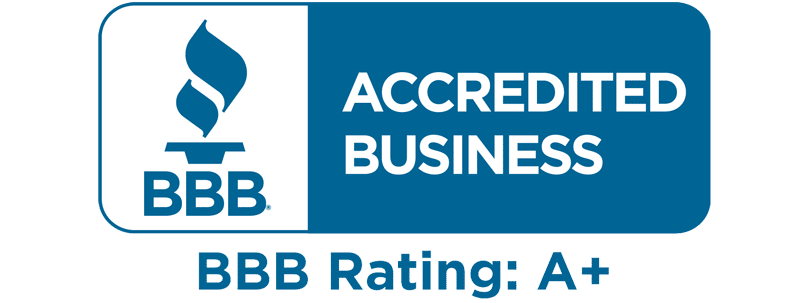Military challenge coins are treasured symbols of honor, camaraderie, and achievement within military communities. These small yet powerful tokens carry immense significance, representing the values, history, and spirit of the units they commemorate. Designing a military challenge coin involves more than just artistic skill; it requires a deep understanding of the military’s ethos and the unique characteristics of the unit. In this article, we will explore the design secrets that contribute to creating the ultimate military challenge coin, from conceptualization and symbolism to material choices and finishing touches.
The Importance of Symbolism in Military Challenge Coins
At the heart of every great military challenge coin is symbolism. These coins are not merely decorative objects; they convey messages, tell stories, and represent the identity of military units. The design process begins with understanding the symbolism that will resonate with the coin’s intended recipients.
- Unit Identity and History: The primary purpose of a military challenge coin is to represent a specific military unit. This could be a division, battalion, squadron, or any other organizational level. The coin’s design should reflect the unit’s identity, incorporating elements such as the unit’s insignia, motto, or historical references. Understanding the unit’s history and traditions is crucial in selecting appropriate symbols and imagery.
- Mission and Values: Military challenge coins often highlight the unit’s mission and core values. For example, a coin designed for a special forces unit might emphasize themes of stealth, precision, and resilience. Similarly, a coin for a medical unit could incorporate symbols of healing and care. The design should capture the essence of what the unit stands for and the qualities it embodies.
- Commemorating Achievements: Coins are frequently created to commemorate specific achievements, events, or deployments. These occasions might include successful missions, anniversaries, or notable milestones. Incorporating elements that represent these achievements, such as dates, locations, or symbols of the operation, adds depth and context to the coin’s design.
- Incorporating Cultural and Geographic Elements: Depending on the unit’s location or cultural background, incorporating regional or cultural symbols can add a unique touch. This might include local wildlife, landmarks, or traditional patterns. These elements help to personalize the coin and make it more meaningful to those who serve in that region.
Conceptualizing the Design: Key Elements to Consider
Once the symbolism and themes are established, the next step is to conceptualize the coin’s design. This involves deciding on key elements such as imagery, text, and layout.
- Imagery and Icons: The imagery used on a military challenge coin should be meaningful and easily recognizable. Common icons include eagles, stars, shields, and other military symbols. The choice of imagery should align with the unit’s identity and the message the coin intends to convey. For instance, an eagle might symbolize freedom and strength, while a shield could represent protection and defense.
- Text and Inscriptions: The text on a challenge coin is a critical component of the design. It often includes the unit’s name, motto, and any relevant dates or locations. The font style and size should be chosen carefully to ensure readability and to complement the overall design. It’s essential to balance the amount of text with the visual elements to avoid cluttering the coin.
- Design Layout: The layout of the coin’s design plays a significant role in its overall appearance. Designers must consider the placement of images and text, ensuring that the design is balanced and harmonious. The layout should guide the viewer’s eye across the coin, highlighting key elements without overwhelming the design.
- Double-Sided Designs: Most military challenge coins are double-sided, allowing for more complex and detailed designs. The front side, often referred to as the “obverse,” typically features the primary design elements, such as the unit insignia and motto. The reverse side may include additional details, such as specific mission symbols, dates, or commemorative messages. Designers should think strategically about how to use both sides to tell a complete story.
Choosing the Right Materials and Finishes
The materials and finishes used in a military challenge coin significantly impact its look, feel, and durability. Selecting the right combination of materials and finishes is crucial in achieving a high-quality, professional appearance.
- Metal Choices: The choice of metal is a fundamental aspect of a challenge coin’s design. Common metals include brass, bronze, nickel, copper, and zinc. Each metal has its unique characteristics, affecting the coin’s weight, color, and durability. For example, brass and bronze offer a classic, antique look, while nickel and copper provide a more modern, polished appearance.
- Plating Options: Plating adds a layer of metal over the base material, enhancing the coin’s appearance and durability. Popular plating options include gold, silver, nickel, and copper. Plating can be applied in different finishes, such as polished (shiny), matte (non-reflective), or antique (aged). The choice of plating should complement the overall design and desired aesthetic.
- Enamel and Color: Adding enamel to a challenge coin allows for the inclusion of vibrant colors, enhancing the visual appeal and detail of the design. Soft enamel fills are slightly recessed, creating a textured surface, while hard enamel is polished flush with the metal, resulting in a smooth finish. Enamel can be used to highlight specific elements, such as unit insignia or symbolic images.
- Edge Styles: The edge of a challenge coin can be customized to add an extra touch of detail. Common edge styles include reeded (similar to the edges of a quarter), smooth, rope, and diamond-cut. The choice of edge style can enhance the coin’s tactile quality and overall appearance.
Incorporating Advanced Design Features
Modern challenge coins often incorporate advanced design features that add complexity and uniqueness to the final product. These features can elevate a coin from a simple token to a work of art.
- 3D Designs: Three-dimensional designs add depth and texture to a challenge coin. This technique involves creating raised and recessed areas, giving the design a sculptural quality. 3D elements can be used to highlight specific imagery, such as unit emblems, animals, or vehicles, making them stand out prominently.
- Cutouts and Shaped Coins: While traditional challenge coins are round, custom shapes and cutouts can make a coin truly unique. Coins can be shaped to represent specific objects, such as shields, dog tags, or state outlines. Cutouts can be used to create negative space within the design, adding visual interest and complexity.
- Glow-in-the-Dark and UV Elements: For a more striking and modern effect, designers can incorporate glow-in-the-dark or UV-reactive elements. These features can be used to highlight specific parts of the design, making them visible in low-light conditions or under UV light. This can add an element of surprise and intrigue to the coin.
- Dual-Plating: Dual-plating involves using two different metal finishes on the same coin, creating a contrast between elements. For example, a coin might feature a gold-plated insignia on a silver-plated background. This technique can be used to differentiate between different aspects of the design and highlight specific details.
The Process of Creating Military Challenge Coins
The process of creating a military challenge coin involves several steps, from initial concept to final production. Each step requires careful planning and attention to detail to ensure a high-quality end product.
- Initial Concept and Design Consultation: The process begins with a consultation between the client (often a military unit or organization) and the coin designer. During this stage, the client’s ideas, preferences, and goals are discussed. The designer provides guidance on design options, materials, and features, helping to refine the concept.
- Design Mockups and Revisions: The designer creates digital mockups of the coin, incorporating the agreed-upon elements and features. These mockups allow the client to visualize the design and provide feedback. Revisions may be made to adjust the layout, imagery, text, and colors until the client is satisfied with the final design.
- Die Creation and Prototyping: Once the design is approved, a die is created. The die is a metal mold used to strike the design into metal blanks. A prototype coin is often produced at this stage, allowing the client to see and feel the coin in physical form. This step ensures that the final product meets the desired specifications.
- Production and Quality Control: After the prototype is approved, the full production run begins. Coins are struck, plated, enameled, and finished according to the design specifications. Quality control checks are conducted throughout the production process to ensure that each coin meets the required standards of quality and detail.
- Packaging and Delivery: The final step involves packaging the coins for delivery. Coins may be presented in custom packaging, such as presentation boxes or velvet pouches, adding to their perceived value. The packaging can also include certificates of authenticity or informational inserts, providing context and background about the coin’s design and significance.
Best Practices for Designing the Ultimate Military Challenge Coin
To create a military challenge coin that is both meaningful and visually stunning, designers should follow several best practices:
- Understand the Audience: The design should resonate with the intended recipients. Understanding the unit’s culture, values, and preferences is crucial in creating a design that will be cherished and appreciated.
- Balance Form and Function: While the coin’s design should be visually appealing, it should also be functional. Consider the coin’s size, weight, and portability, ensuring that it can be easily carried and displayed.
- Focus on Quality: High-quality materials and craftsmanship are essential in creating a coin that will stand the test of time. Investing in quality ensures that the coin will be a lasting symbol of honor and achievement.
- Pay Attention to Detail: Small details can make a significant impact on the final design. Attention to detail in imagery, text, and finishing touches can elevate a coin from good to exceptional.
- Incorporate Feedback: Throughout the design process, incorporate feedback from the client and potential recipients. This ensures that the final product aligns with their expectations and preferences.
Conclusion
Designing the ultimate military challenge coin is a blend of art, history, and craftsmanship. These coins are more than just collectible items; they are powerful symbols of identity, honor, and camaraderie within the military community. By carefully considering symbolism, design elements, materials, and advanced features, designers can create challenge coins that are not only visually stunning but also deeply meaningful. As the tradition of military challenge coins continues to evolve, these timeless tokens will remain a cherished part of military culture, honoring the bravery and dedication of those who serve.
If you are interested in a unique challenge coin, you can call us at 800-371-6256 or fill out a FREE quote form.








